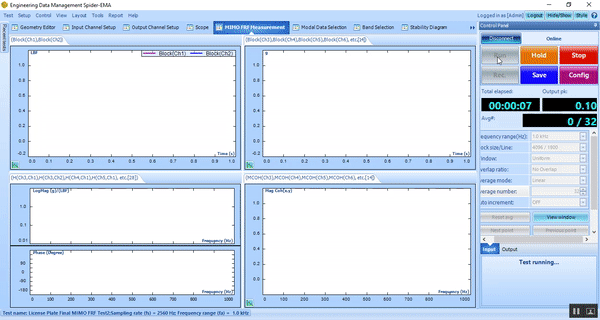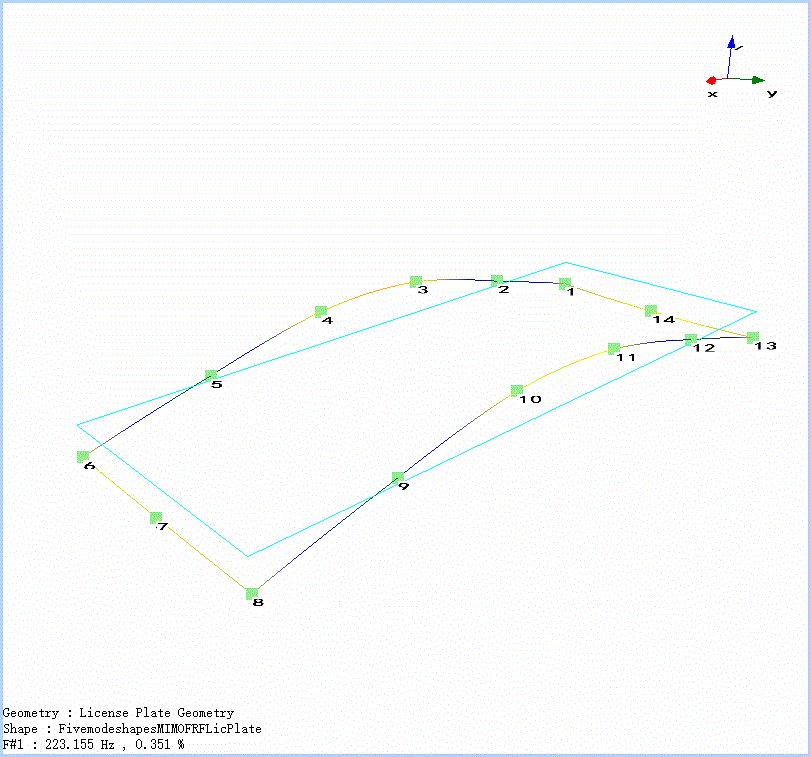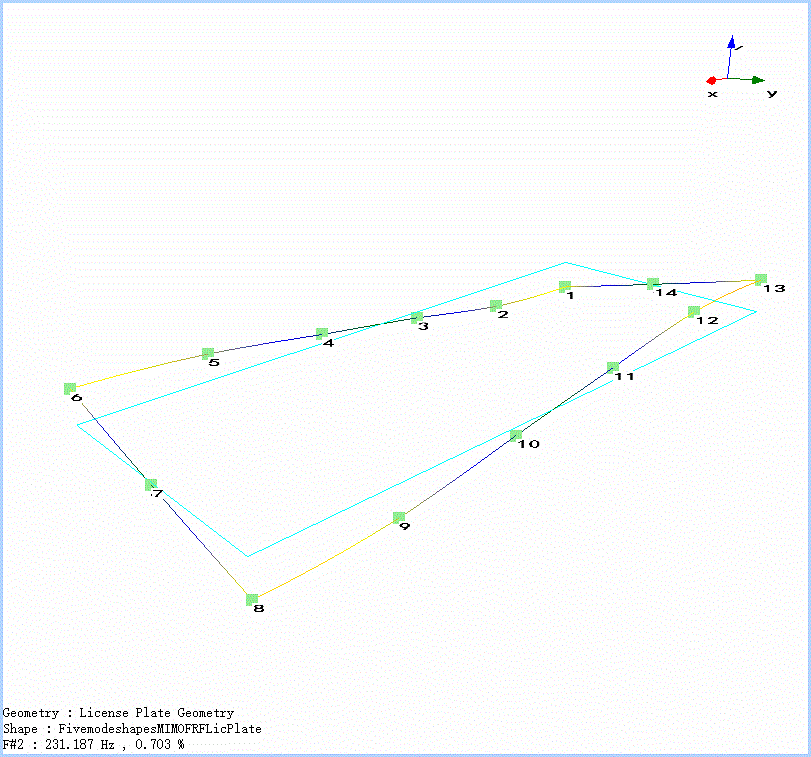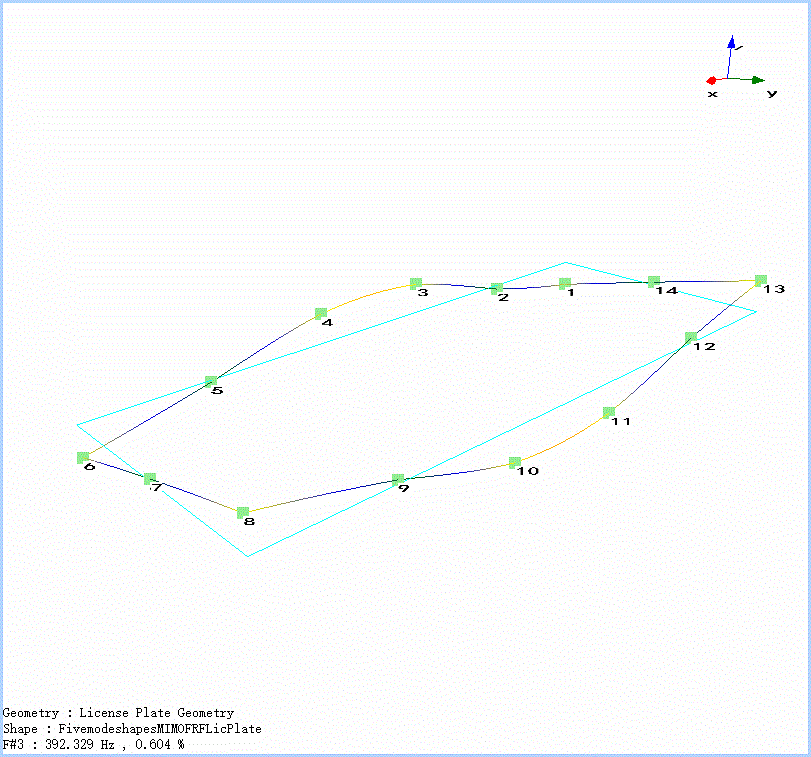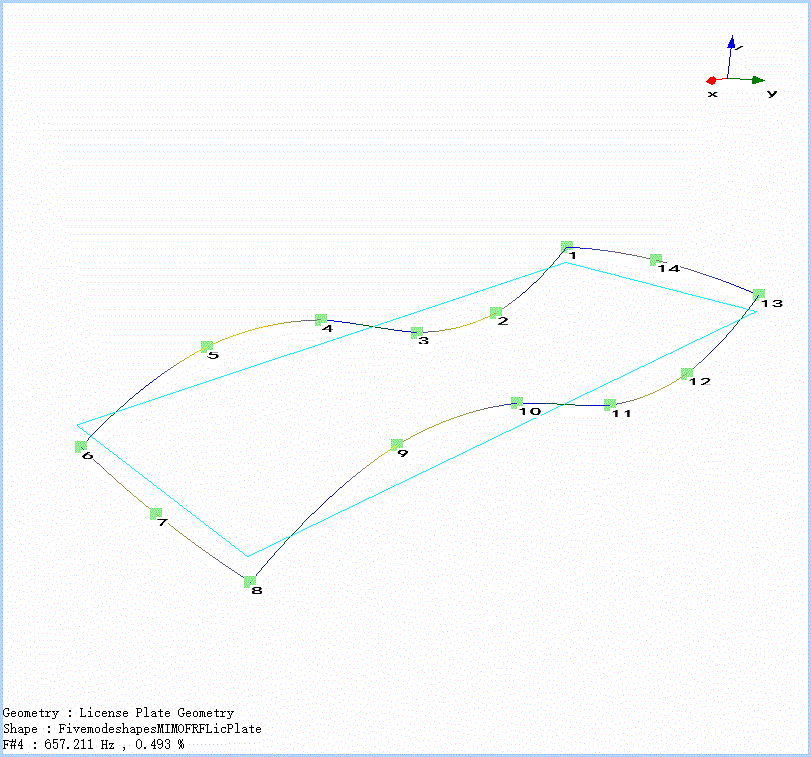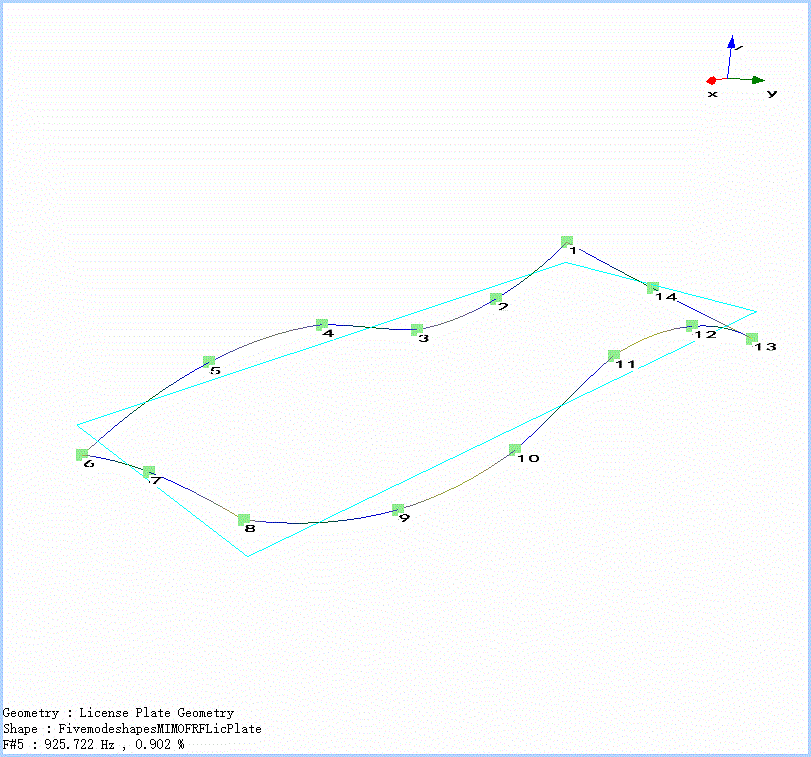MIMO FRF Testing of License Plate
Extracting the natural frequencies, damping shapes, and mode shapes of a structure aids in improving the design of the unit under test. In this case, the modal characteristics of a license plate is acquired by performing a modal analysis.
A MIMO FRF test is carried out using a pair of modal shakers and 14 accelerometers to obtain the vibration characteristics. The shakers impart energy to the structure for a longer period, which ensures an increased data set. The higher quality of the measurements also aids in the better estimation of the modal parameters.
A roving response method is usually implemented with a modal shaker test, but this procedure induces a mass loading effect in the results. To avoid this, small uni-axial accelerometers are attached on all the measurement points to capture the response of the entire plate in one shot. To run the high-channel count test (14 response channels and 2 excitation channels), a pair of Crystal Instruments Spider-80X front-ends are used with a Spider-Hub. The latest 8.0 release of the EDM Modal software assists in executing the MIMO FRF test.
Figure 1. Modal Shaker Testing using the Spider-80X front-ends
The plate is discretized into a mesh configuration of 14 points. A free-free boundary condition is achieved by using flexible bands to suspend the plate as shown in the above physical setup. The modal shakers excite the plate at the bottom corners. The responses to the shaker excitations are captured using 14 uni-axial accelerometers that are evenly distributed throughout the entire structure. Measuring the excitation and response in the z-direction facilitates in obtaining the out-of-plane mode shapes.
Figure 2. License Plate Geometry
A sampling rate of 2.56 kHz is used because the frequency range of interest is 1 kHz. A block size of 4096 is implemented to ensure that no windowing is required and the response decays naturally. These configuration settings produce a fine frequency resolution of 0.625 Hz. Linearly averaging 32 blocks of data at each DOF helps produce measurements of higher accuracy and reduced noise. Burst random excitation imparts energy across a broad frequency range and has the added advantage of user tunable burst percentage to control the no output duration time which ensures that there is no leakage. For this test, the output amplitude was set to 0.1 V with a 90% burst rate.
Figure 3. MIMO FRF Measurement of the license plate
The 90% burst rate ensures that the shaker provides excitation for 1.44 seconds in each time block and there is no output for the remaining 0.16 seconds. This makes sure that the responses of the plate decay to zero naturally before the end of each time block. This information is represented graphically in the measurement screenshot above. A good multiple coherence measurement of close to 1 is observed which validates that the inputs and outputs are well correlated. This also helps the user attain confidence that the measurements are repeatable.
The FRF measurement shows five peaks in the 0-1000 Hz frequency band with two closely spaced modes near the 200 Hz region. Plotting the imaginary part of all the FRFs guides to observe the phase relationship between the measurement DOFs. The good alignment of the peaks on the imaginary portion of the FRFs indicates that there is no mass loading effect induced in the results.
Figure 4. Modal Data Selection tab showing the imaginary part of all overlapped FRFs
The new Poly-X (https://www.crystalinstruments.com/modal-analysis) method is used to curve-fit all the FRF’s using a 30-order polynomial to procure the following stability diagram. Since two shakers were used for excitation (two references), two Complex Mode Indicator Function’s (CMIF) are present in the stability diagram. Five modes are selected within the desired frequency range.
Figure 5. Stability Diagram for the MIMO FRF test case
The Auto-MAC matrix helps in validating the results. The Auto-MAC matrix below shows that the modes are orthogonal to each other (low off-diagonal elements) and are uniquely identified (high diagonal elements).
Figure 6. MAC Chart for the MIMO FRF test case
The mode shapes associated with the stable system poles are shown below.
The results show the strength of the high-channel count Spider-80X and the efficiency of the EDM Modal software.
To learn more about EDM Modal software, visit: www.crystalinstruments.com/edm-modal-testing-and-analysis-software/



